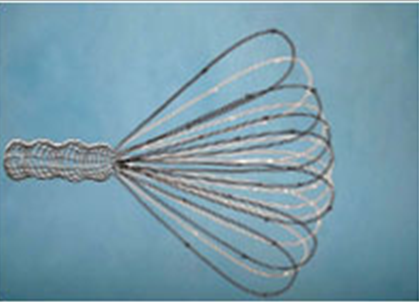Imran Mir
This is a collection of articles archived for the excellence of their content. Readers will be able to edit existing articles and post new articles directly |
Imran Mir
Visual Journey
By Shamim Akhter
Imran Mir calls his paintings ‘Papers on Modern Art’ and wonders why viewers see geometry in his work. To some extent he is right; but what one sees on his latest extra large canvases are forms constructed with derivations from geometry.
It is his excellent designing skill and ceaseless cerebral energy which creates optical illusions on the one hand and, on the other, mystifying movements which pushe the viewer in and out of forms on his canvases. It is like going into space with him. His forms seem to travel on canvas from unknown zones, ready to jump out from the periphery of brightly coloured spaces.
With admirable patience Mir weaves forms repeatedly with tiny arches and squares which, in delicacy, look like the work of a jeweller. On one of his magnanimous canvases, which has been divided into two with challenging red and black colours, he combines two opposing forms — circle and square — and produces two large forms resembling old megaphones. Meticulous chains construc- ted with tiny squares wind into closely knit countless circles which keep growing from the smallest to the largest circumference ending in the shape of megaphone.
Intelligently he introduces a red ball to break the monotony. He dramatises other canvases with red balls which seem to be jumping out from the space he has created to explore the world of visual reality. He has the magic to mesmerise the viewer with pure form and colour. He does justice to the view that painting is a visual experience first and foremost. About his current work he says, “What you see is what you see.”
Presently chairman of an advertising agency, Mir graduated from Central Institute of Arts and Crafts, Karachi in 1971. Later he obtained his Masters in Communication Design, from Ontario College of Art and Design, Canada 1976. He spent some time in the US where he visited several art galleries. Perhaps it was during these visits that he discovered his ground. That was the time when Op Art and Minimalism were fad in New York. Optical illusions were produced with repeated patterns of line and simple colours. Through use of linear perspective and atmospheric effects illusions of three dimensions were created in two dimensional spaces.
Blank, neutral, mechanical impersonal minimalism came as an antithesis of the prevalent romantic, biographical abstract expressionist style. Minimalism asserted an overtly unsymbolic physicality gravitating toward regular, geometric forms or modular sequences with uninfected surfaces which was placed directly on the wall to stress its continuity with real space. There were no metaphors involved in what the viewers saw. It was what it was.
Almost 30 years ago Mir also took off in the same pattern. Meandering through the lanes of experimentation, he has given new meaning to minimalism. He creates feelings with his subtle textural strokes. Late Amjad Ali, once called Mir’s six-foot high canvas large. He could not live to see his 27 feet large canvas at V. M. Art Gallery which is showcasing his latest collection of eight paintings in acrylic on canvas.
Until the early eighties, Mir’s works were confined within geometric forms. These forms could be drawn with compass or ruler. His lines were strictly controlled within mathematical patterns; and yet his formations had a rhythm of their own. One could feel the pulse of horizontal and vertical lines and the completeness of the circle on his canvas. His lines and arches were suggestive to the human mind. The intersection of the lines produced interesting shapes.
It was in the late eighties that Mir was found relaxed and free on his canvases. His solo show at the Sheraton Art Gallery, Karachi in 1987 presented a brighter picture of colours. There was freedom of form but at the background only. At that show he used plenty of half tone effects. He introduced some free forms involving freehand drawing. This background music softened the rigidity of the outstanding geometric form. His imagination created interesting situations on his canvases.
Like a surrealist he introduced odd shapes and placed them at strange junctions like a carrot flying over a pyramid, a cone, a hand print, an X sign or a large aflame matchstick hanging in the air. Mir never gave any meaning to these bizarre situations and left it to the imagination of the viewer. His concerns were and still are aesthetics which he solves with mathematical approach.
Mir’s calling is related with his job which is a source of permanent income for him. He is glad that he is not compelled to paint for a living like Jamil Naqsh and others. He paints only when creativity incites him. That is the reason he enjoys the application of every stroke under the spell of mystique of creativity.
Mir has to his credit more than 28 exhibition including a group exhibition where he displayed computer graphics, the first of its kind in Pakistan in 1990; he is decorated with several national and international honours.
Imran Mir weaves forms repeatedly with tiny arches and squares which, in delicacy, look like the work of a jeweller


